

|
LOST AND FOUND |
Information and, where possible, downloads relating to unreleased, withdrawn, pre-release or rare versions of BBC games. If you have something to contribute, whether it be files or info, please don't hesitate toget in touch.
|
3D POOL by Orlando (FIREBIRD) |
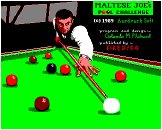 |
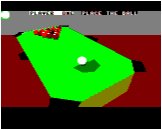 |
Was only given a limited commercial release around 1989/1990 and is consequently very rare. Two versions are available for download: a pre-release and what appears to be a final, retail release. What's baffling though, is that my original copy of the game contains the pre-release files!
Both disk images also contain a few sound and graphics demos, including a startlingly impressive bouncing ball demo!
STATUS: FOUND [ download pre-release ] [ download final version ]
|
3D SNOOKER by Steve Siddle (PLAYERS) |
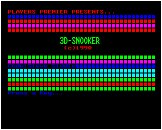 |
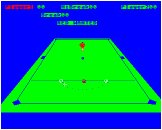 |
Had no idea this existed until Dick Greening sent me a copy in January 2002. I would have declared it 'unreleased' had Jeremy Grayson not provided me with a cover scan of the original and the following info:
3D Snooker was a lucky find discovered in a key-cutting kiosk (now defunct) at Manchester Piccadilly station some five years ago! I'd never seen it anywhere else before that and have never seen it again since - rare indeed.
STATUS: FOUND [ download ]
|
3D WARS DEMO by Orlando (PSG) |
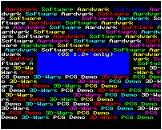 |
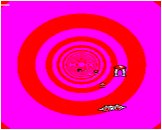 |
Given away on the cover of Personal Computer Games magazine, in 1985. Mark West contributed it to The BBC Lives in April 2001.
From Nick "Orlando" Pelling:
I also developed a large number of other unreleased games, of which "Malus" and "3D Wars" were probably the two most complete. In retrospect, I should have released them: but I was never quite as happy with them as I was with the games I did put out. Perhaps I should have been less critical. :-)
STATUS: FOUND [ download ]
|
AJH ADVENTURES by Andrew Hayes |
|
|
|
From Andrew:
AJH Adventures includes 'Soft Porn' (a conversion from an IBM PC game) and 'AndyAdv', an (unfinished) original adventure that I was developing using the game engine from the book called How To Write Adventure Games by Peter Killworth. Note: Soft Porn (as you can guess) has an 'adult' theme!
STATUS: FOUND [ download ]
|
ALIEN DESTROYERS II by David Elliot (MICROPOWER) |
|
|
|
Released on the Electron as Electron Invaders but as far as I know, was never given a BBC release. Be sure to get in touch if you know otherwise.
STATUS: FOUND [ download ]
|
AMIDAR by Adrian Stephens |
|
|
|
Excellent clone of the coin-op of the same name, written by the author of Killer Gorilla. The game was renamed to Crazy Painter (probably to avoid legal action) and was released by Superior Software.
STATUS: FOUND [ download ]
|
AMNESIA by Kevin Edwards |
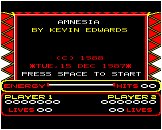 |
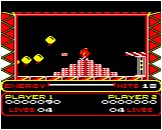 |
Unreleased platform game submitted by the author in May 2002. N.B. the game was never finished hence the sound and later levels are missing.
From Kevin Edwards, May 2002:
'Amnesia' was the working title of a BBC / Electron prototype that I worked on for about a month in late 1987 (there is a time/date stamp on the title page ). I created all of the demo artwork for the game - this is why it looks so bad ;-). The prototype demonstrates a software based sideways scrolling system that used screen double buffering to eliminate sprite flicker. This worked well, but was very slow as the entire screen image had to be re-drawn each frame update - unlike hardware based scrolling systems where only the 'new' edge(s) need to be updated. As the Beeb game market was in serous decline it was essential to have an Electron version too - to make the project commercially viable. However, after the prototyping period I wasn't happy enough with the game and it was shelved - I vaguely remember approaching Richard Hanson at Superior with an early version. Amnesia was influenced by games such as Super Mario and even Sonic. However, the performance was no where near good enough to match the 'slick' games that were appearing on the new game consoles. Sadly, Amnesia was one of the last prototypes I produced for the Beeb and in 1988 I began work on games for the Nintendo NES console.
STATUS: FOUND [ download ]
|
AND ALL BECAUSE or ZORBICUS by Gary Partis (SUPERIOR) |
From Gary's Website:
A scrolling arcade adventure licensed from Cadburys (Milk Tray). A game which was shelved due to the contraints of the license from Cadburys (or so I was lead to believe)! It was a multi-part game where the player, 'The Man In Black', had to circumnavigate various obstacles to gave the lady a box of Milk Tray. It was a sideways scrolling type game.
From Matthew Atkinson, December 2001:
Now I was involved in writing the Amstrad CPC/Spectrum versions. All versions were at an advanced stage when it was decided to wind up the project. Apparently there had been a change of marketing manager at Cadburys who wanted to move the brand "up market" so no tacky video game association thank you. The Atari ST version was looking especially good when I saw it.
STATUS: LOST
|
ARC PINBALL (SHIBUMI SOFT) |
|
|
|
Great pinball game from 1990, unlike any other on the Beeb.
I knew of the Archimedes version, but can't ever recall a BBC version being advertised.
However, as the copy I have in my possession features professional labels (see image to right), you have to assume that it was available commercially.
STATUS: FOUND [ download ]
|
ARCADIA (IMAGINE?) |
|
|
|
Arcadia on the Spectrum was the game that made Imagine Software, shifting huge numbers throughout Xmas 1982. There later followed releases for the C64 and VIC-20, but it never saw the light of day on the Beeb. I am presuming that the version linked below is a pre-release, or perhaps one that was sent for evaluation but rejected. It could of course be neither. Interestingly, Tynesoft released an Electron-only game called Wet Zone which is very similar - in fact, it's definately the same game, by the same author, but with minor modifications.
STATUS: FOUND [ download ]
|
BALLS by Simon Kilvington and Matthew Spencer (YES MARKETING) |
|
|
|
2 player Sphere of Destiny clone. Attributed to Audiogenic Software on Crispin Boylan's BBC Games database but AFAICT it never got released. I certainly never saw it advertised. Feel free to prove me wrong though.
Update:
Not an unreleased Audiogenic proggy after all - just a very rare game that was available via mail order from a company called Yes Marketing. Click here and here for front and back cover scans (provided by Dick Greening).
From Matt Spencer, March 2009:
I have just spent a few hours reminiscing about my childhood and trying to see if I could find any information on a game myself and Si Kilvington wrote, when I came across your archive.
If you would like the history, Balls (in the days before there was a 'z' at the end of everything!) was produced by myself and Simon Kilvington. This explains the 'produced by MASIK' on the cover art (MAtthew S + SI Kilvington). The game was produced in Si's bedroom and was originally signed to be released (by a company beginning with 'M' I think?). Contracts were signed and we were all set to become millionaires off the back of the title when the publisher decided that there was no longer any money in BBC games so pulled out of the BBC market and returned rights to the title back to us.
I was in the 6th form at school at this point, and working within our Young Enterprise scheme [ www.young-enterprise.org.uk/pub ] and we decided to try and market the game ourselves, thus the name YES Marketing (Young Enterprise Scheme Marketing). This looked to be going very well initially as we had very good reviews for the game in two of the three Acorn publications at the time (A&B Computing and BBC Micro User magazine). I used to have cuttings of these at my parents house, but I fear that they may have been lost now! One of the publications put the wrong contact details for getting hold of the game which I have always blamed for only ever selling about 20 copies.
So anyway, thats the story about Balls if you are interested. Nothing to do with Audiogenic, just a labour of love for two guys who were probably a little jealous of their friends playing Trailblazer on the Spectrum.
STATUS: FOUND [ download ]
|
BATTLEZONE by Matthew Atkinson (ATARISOFT) |
From Matthew Atkinson, December 2001:
Tempest ... may have been "inferior" to Orlando's version but then it was my first commercial project back in 1984 ... I went to Atari initially about converting Battlezone but ended up doing that instead. I did complete "Battlezone" which had mode 5 palette switching to achieve very smooth vector graphics but never got released. Sadly no longer exists ...
STATUS: LOST
|
BLACK WIDOW by James Watson/Dudleysoft |
From James:
Like most of my projects Black Widow 1 was started but got no further than the starts of an engine. It was going to be an Operation Wolf style game but without the scrolling. I got as far as drawing the backdrop, moving a couple of sprites around and moving the cross-hair, and that was all she wrote (so to speak).
STATUS: LOST
|
BLOCKMAN by Peter Averill |
|
|
|
This appears to be an early version of Micropower's Danger UXB. Any more info?
From Robert Schmidt, January 2002:
Just noticed Blockman in the L&F section... I think this is identical to a game I remember typing in from a magazine. The colors and graphics seem right, the instructions ring bells, and the code seems to be just BASIC. The magazine was maybe Electron User.
From Peter Averill, February 2002:
I can confirm that Blockman is indeed an early version of Danger UXB, because I wrote it. I've no idea where it might have come from. I really can't recall what if any changes were made between this and the release version except Micropower changing the name; probably just bug fixes, so if there is anyone out there still wanting to play it I'd really recommend they get the final version. Well, frankly I'd recommend they invest in a somewhat newer PC and get themselves a copy of Serious Sam!
Just to answer the points on the page, the code is mostly basic, there is a little machine code for the sprite movement. The program was never available to type in from a magazine (not legally anyway). There was a separate Electron version later, but this isnt it.
STATUS: FOUND [ download ]
|
BOLO or DICTATOR by Stuart Cheshire a.k.a. Delos D Harriman (GO-DAX) |
Links:
Stuart Cheshire's homepage
Joseph Lo & Chris Hwang's Bolo hompage
WinBolo
From Micro User, January 1989:
Although I first saw Bolo at the end of January 1988, only recently have I received written details about it. As I noted then, Bolo is a real-time tactical wargame that allows up to 16 competitors - each using a different machine - to play simultaneously. The game is set on a large island, the objective simply being to dominate it. However, with up to 15 other players trying to do the same, it is going to be no walkover.
Each player controls a tank which can move around almost any part of the island. The screen, which shows only a small part of the island, scrolls as you explore your surroundings. This technique will be familiar to players of games such as Repton and Ravenskull. The island has everything you would expect to find - swamps, craters, rubble, forests (that actually grow) and lots of water.
The terrain slows your tank down to varying degrees, so you move more slowly through water than through a forest. To allow you to change location speedily you can build bridges and tarmac roads. You can also construct buildings - your home base - and destroy the forests or anything that an opponent may have built.
You have a limited number of shells and mines, armour plating of only a certain strength. All can be replenished by calling at a refuelling base but one or more opponents may hamper your access, leaving you at a disadvantage. Conversely, you can try to keep opponents from getting through to refuel and rearm. There are also pillboxes, which at the outset shoot at anything in sight, but they can be disabled and made loyal to one player. Thereafter they attack everyone except that player and his allies.
You can form alliances with others so that two losing players can gang up on a third and form a more effective opposition.
Versions of Bolo are also planned for the Archimedes, Atari ST and Commodore Amiga. Because these machines have RS232 serial interfaces, any combination can play together. Bolo is now nearing the end of its long gestation period. When it arrives it will be a blockbuster.
STATUS: LOST
|
BOMBJACK (ELITE) |
From A & B Computing, July 1987:
Big news time: Elite are returning to the BBC games market! Bombjack, promised last autumn, is apparently nearly finished and Paperboy should follow it soon. Seems that the programmer had a coding block ...
From A & B Computing, December 1987:
Elite confirmed that it has no future plans for the BBC. I am still hearing rumours of a released but bugged and recalled Bomb Jack.
STATUS: LOST
|
BRAZ by PAUL BRANTON (LIVEWIRE) |
|
|
|
Unreleased platformer for the Electron.
Spotted on an eBay auction together with Fruit Catcher (qv). The seller acquired the tapes from the former managing director of LiveWire software, a Manchester-based company that folded in the 1980s.
STATUS: FOUND [ download Electron UEF tape image ]
|
BUBBLE BOBBLE by Peter Gillett (FIREBIRD) |
|
|
|
Neat conversion of this world-famous coin-op. Never got released though, not on the Beeb anyhow :-( . According to the game's loader screen it was set for a 1989 release - very late on in the commercial BBC games market. Perhaps Firebird feared profits would be minimal - taking into account the dwindling market and the licencing fee that would have to be paid out for a Beeb release? The author, Peter Gillett, released the game into the public domain in January 1998 when he sent it to 8BS for inclusion in their catalogue.
Update - a little clarification from The Bird Sanctuary website:
An unpublished BBC micro conversion that claimed to be from Firebird surfaced on the web a few years ago. Coded by Peter Gillet with graphics by Martin Kelsey, this version was written entirely off the developer's own backs. Only once the game was nearly completed (based upon hours of playing the C64 conversion!) did they approach Firebird. Unfortunately for them, their efforts were in vain. By the late 1980s, the BBC Micro market was no longer considered commercially viable by Firebird and the licensing costs added on top of that factor made an official BBC conversion a non-starter. Peter approached a few other publishers (including Superior Software) but they all passed, and so the unofficial conversion remained hidden until Peter submitted it to a PD library and it eventually surfaced on the web.
STATUS: FOUND [ download ]
|
BUILD N BREAK by Melvyn Garcia |
|
|
|
From Melvyn Garcia, February 2003:
I was mainly inspired by the Repton series of games released by Superior, and thought I'd try my hand at a puzzle game and level designer. I had taught myself assembler programming in the early days of the Beeb and invested in the How to Create Arcade Games reference book (by Acorn I think). Over the years that I had my Model B and later a Master 128 I wrote a mouse driver (similar to the AMX Mouse) and a sideways RAM image containing graphics library routines.
For amusement I had a great time hacking commercial games to see how they worked and to cheat of course. These were always games that I had legitimately purchased of course!
I did complete a few projects which I never really considered to be of commercial quality, but they amused me at the time. One was a scrolling space shooter which involved collecting fuel and assembling a launch platform whilst avoiding and shooting meteors and aliens. Another was a graphical adventure similar to Castle Quest/Citadel.
Build & Break took a couple of months to put together after the initial design on paper. I designed the graphics first, then the basic i/o and graphical routines. I had previously put together a number of standard routines to handle sprites and keyboard/joystick input. I tested the with a number of hand-coded levels, as I was planning on writing the level editor afterwards! The actual level designer and levels took another few months to design and test and luckily I had the help of a few friends to try out the game at each stage of development. Total development time must have been about 6-9 months (in those days I had a lot more time and much fewer commitments!)
Once I felt that it was finished, I decided to send it to Superior and Micro Power but received very nicely worded rejections, so never bothered to persue it any further.
When I got my Master 128 I developed another puzzle game called 'Shove-It' which I also sent to Superior (this was also summarily rejected). This included a level designer again, and was developed to run on a Model B in medium res monochrome or on a Master (and Compact) in medium res colour. If I discover them I'll be more than happy to send them to you. I was particularly proud of "Shove-It", as this must have taken about a year to complete!
I never did produce a commercial game in all the years I had a Beeb or Master, but did have great fun fiddling around with everyone elses games!
I have to admit to being more than a bit sad when I sold my Beeb stuff, but it just wasn't practical to keep it. I have lots of good memories though, even if I DID spend a shed-load of cash over the years!
I'm a DBA working for a fairly well known Sugar manufacturer in East London now, so I'm still intimately involved with computers. The stuff I work with now is just a tad bigger and more powerful than the old Beeb, but I still get a kick out of playing the old games on my BeebEm emulator!
I hope that this adequately answers all your questions, and I also hope that my little game will be of interest to visitors of your web site.
STATUS: FOUND [ download ]
|
CASTLE OF GEMS by Paul Shave (MRM) |
From STH Interview, October 2000:
In 1984, my eldest son Tom started raving about a new game in the arcade in Newbury: Crystal Castles, from Atari. (Heck, he was only 12 - what was I doing letting him play on the arcades?) He persuaded me I had to do a Beeb version, so Castle of Gems was born. I knew this was going to be a winner, and that it needed some proper marketing. Although the other games were selling steadily, they weren't really making me much money, and I couldn't afford big advertisements. So I took it along to a computer games trade show at Olympia, and on the MRM stand I persuaded them to load it onto a Beeb. They liked it and wanted to take it on, but I told them that it was very similar to the arcade game, and the issue of copyright on look-and-feel wasn't clear at that time. Ron Wylie, the MRM manager, came round to my house, and we went down to the arcade with Tom, who demonstrated Crystal Castles to him. He didn't think there would be a problem, so they went ahead with marketing it and gave me an up-front advance of £1000.
As soon as it went on sale, in October 1984, Atari realised what was happening, and a letter from their solicitors was delivered to MRM on 26th October. It said "… It is absolutely plain to us that in making Castle of Gems you blatantly copied the game Crystal Castles… Unless you confirm to us by noon on Tuesday, 30th October 1984 that you will forthwith cease offering for sale and selling any copies of Castle of Gems [and] submit proposals for paying damages to our clients, our clients will issue proceedings for injunctive relief, damages and costs…". Scary. MRM's solicitors responded robustly, but Atari were putting all their guns behind it and although the copyright issue had never been tested in court, MRM couldn't afford to contest it. On 7th November, Ron Wylie wrote to me "It is with great regret… if we lost then the claim for damages could be in the region of £50,000… our solicitor has negotiated a "no costs, no damages" agreement with their solicitors. With regard to our losses in this case, we enclose a short list of our expenses and receipts in this matter [they showed costs of £3932.20, including the £1000 advance, and sales of £2845] and perhaps you would care to make an offer to help with our costs. Whilst we could be "very nasty" towards you in this matter, and our solicitors have advised us that we could claim any damages from you if we so wished, we are not that kind of company… I hope that this matter will not separate our association as I know you are capable of writing some top class software; perhaps in future they will be original ideas." Ouch! I don't have a record of my reply (if any), but I know I didn't give them any money.
Atari eventually released their own version of Crystal Castles for the Beeb, which in my view was nowhere near as good as Castle of Gems. I also have a letter from a company called CDS dated 16th August 1985, which says "We have just agreed terms with Atari to allow us to release Castle of Gems on the BBC in this country and would now like to formalise our agreement with you". I don't remember anything about this, so it must have fallen through. They were offering royalties of 20p per cassette and 45p per disk.
STATUS: FOUND [ download ]
|
CASTLE RAIDER by Tony Sothcott (MICROPOWER) |
|
|
|
After acquiring Tony's old Acorn equipment, Jon Irvine was delighted to discover a floppy that contained this historic artifact!
From Tony Sothcott:
This version of Castle Quest is actually the original version, prior to Micropower's promotional version. It was originally called Castle Raider. This version may also contain some of the original bugs!
STATUS: FOUND [ download ]
|
CAVE RESCUE by Mike Wyatt |
|
|
|
From Mike Wyatt:
I started to write Cave Rescue back in the 80's. The idea was to land in the caves and pick up stranded people while avoiding the missiles, bombs and volcano debris. I did not get very far with it!
I'm afraid there is no chance of seeing the finished game on the Beeb - it's just too painful writing assembler these days! I was thinking of re-using the land generation technique for a PalmOS or PocketPC version - maybe I'll get started on it sometime.
STATUS: FOUND [ download ]
|
CITADEL - EARLY VERSION (SUPERIOR) |
|
|
|
Early version of Michael Jakobsen's classic arcade adventure.
STATUS: FOUND [ download ]
|
CITADEL 2 by Symo (SUPERIOR) |
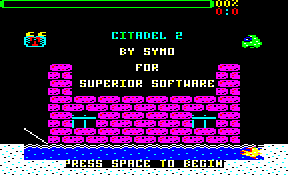
This might come as quite a surprise, but in 1993 Superior Software released a sequel to Citadel, the popular arcade adventure written by Michael Jakobsen. It appeared on Play It Again Sam 18 in 1993 (the last official PIAS) but this was far too late for many BBC gamers to catch the first time round ... so here it is again.
From Simon Storr (aka Symo), May 2000:I wrote it as I was completely amazed by the original Citadel, though the code was entirely my own. It took me 4 odd years to write in my spare time while at 6th form/uni and only got £100 and a couple of free copies for my efforts but it was great fun to write. The cheat password CLARE (on the opening screen) was my girlfriend at the time :> and the game was originally called The Fort but old Mr Hanson made me change it :> I think it was the very last game to be produced for the Beeb and I don't think Superior got much themselves from it as the scene had already pretty much died by then.
STATUS: FOUND [ download ]
|
CHOPPER II adapted by M Beaton |
|
|
|
Identical to Acornsoft Defender/Planetoid (the same code) but with different graphics - you control a helicopter instead.
STATUS: FOUND [ download ]
|
COOKIE by Paul Proctor (ULTIMATE) |
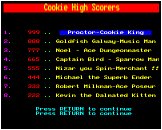 |
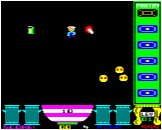 |
Ultimate (who later became Rare Software) achieved cult-status amongst BBC gamers, despite having only released seven games across the platform (Alien 8, Atic Atac, Jetpac, Knight Lore, Nightshade, Lunar Jetman & Sabre Wulf - every one a classic).
So what should be especially pleasing to fans is this unreleased conversion of the Spectrum arcade game of the same name. I don't know how/where/why it was leaked, but it's completely and utterly genuine so who cares!? Another added bonus is that all the music was composed by Martin Galway, a figure worshipped by legions of C64 fans and quite possibly the most famous musician on the 8-bit scene. His other BBC compositions are the best examples of Beeb-music going, just listen to Crazee Rider, Galaforce 1/2, Hypersports & Strykers Run to see what I mean.
This glorious discovery was contributed by Dick Greening in January 2002.
STATUS: FOUND [ download ]
|
CRAZY BALLOON (ACORNSOFT) |
|
|
|
Coin-op clone that never got beyond pre-release status. It's enjoyable enough but the graphics are certainly below Acornsoft's usual standard, so it's not really any surprise that it got shelved. Then again, the graphics on the original arcade machine were hardly anything spectacular. The program listing is entirely in BASIC and contains the following text:
Copyright 1983 Acornsoft Pre-release version 1.2 BASIC program to be Compiled into Object code When John Coll Agrees launch date Code : 3BALL113,1983 JANSTATUS: FOUND [ download ]
|
CRYSTAL CASTLES by Peter Johnson (ATARISOFT) |
|
|
|
Fell foul of Atarisoft's decision to abandon the BBC scene in 1984 whilst many games were still in production. Eventually picked up by US Gold some two years later.
STATUS: FOUND [ download ]
|
CUTE TO KILL: BEYOND INFINITY (POWERHOUSE / MANDARIN?) |
|
|
|
Fabulous Speccy-styled platformer with a thumping soundtrack to boot - all in all quite unique for the Beeb, really! According to Crispin Boylan's BBC Games database, it was released by Mandarin Software. However, I've scanned through a number of old BBC mags and couldn't see it listed, either in advertisements or in the stock lists of various mail-order companies. A Mandarin release would make sense though, as they did distribute another Powerhouse effort - the superb Icarus.
Anyway, you really MUST try this game! Note that it doesn't work on the current version of BeebEm (v1.4 at the time of writing) - it's fine on pcBBC, though.
From Stuart Goodwin, April 2003:
it was indeed released by Mandarin - I vividly remember an advert for both Icarus and Cute To Kill. I think the ad was in A&B Computing at some point. Great game, as well.
STATUS: FOUND [ download ]
|
DANO SOFT COLLECTION by Danny Nicholas |
|
|
|
|
|
|
|
|
|
|
|
From Danny Nicholas:
These disk images are DFS (for the BBC) and ADFS (for the Electron) and contain a selection of programs written by me, Danny Nicholas. They were written during my teenage years on my home Acorn Electron in the late eighties. I hope you get some enjoyment or interest out of them. I was quite proud of them at the time. The programs have been successfully tested on ElectrEm and BeebEm.
Contents:
|
|
STATUS: FOUND [ download DFS Disc Image ] [ download ADFS Disc Image ]
This .rtf file contains detailed notes about each program, including important compatibility/loading information.
|
DAXIS by Gary Partis, revised by Peter Scott (AUDIOGENIC) |
From A & B Computing, May 1987:
Never resting for a moment, Gary Partis has started yet another new game, this one called Daxis, for as 'many systems as possible', although coding is being developed on his Master 128.
The BBC version will require a disk as there will be several loads - the biggest game since Elite is the claim. What sounds most intriguing is the gameplay - apparently the game will contain elements of all your favourite arcade games!
More news next month together with a scenario but be warned! It was apparently dreamt up at 3 o'clock one morning by Gary and Audiogenic's Product Manager Darryl Still when 'inhibitions were at a low point - and alcohol content at a high point!' So complex are the ideas that it has taken the fast-moving Partis three months to sort out all the finer details but I suspect the wait will be worth it.
Any game with appeal across as wide a range of machines as possible implies to me that Audiogenic feel they're onto a real winner.
From A & B Computing, June 1987:
Apparently Gary Partis' new megagame which includes elements of just about every game you ever enjoyed playing is nearing completion at the time of writing. Still too early to have a sneak look at it (major coding has been done on the C64), but I do have details of the scenario:
The Dranyam are a race of rogue humans, expelled from Earth to the planet Daxis for their wicked wrongdoings. They have, however, plotted their revenge and have been making swooping raids on Earth and returning with some of the home planet's greatest characters, with the aim of putting into action a cruel breeding program. This is intended to produce a master race of ruthless, highly intelligent and incredibly strong women - La Donna Majora.
So far they have only succeeded in producing immensely strong but quite brainless males (Particles) who are totally expendable and are used as their fighting force. The Dranyam have fifteen prisoners, each held on a separate planet.
You have been given the task of saving these people. Firstly, you must trace each planet, strafe its outer city walls and then find a strip to land your craft. You must then leave the safety of your craft and battle hand to hand with the Particles, before entering a house filled with booby traps. In the house you must reach the hostage, solve a puzzle which identifies the hostage and then make your escape.
Should you save all 15 hostages, then you must seek out and destroy the planet Daxis before returning home.
From A & B Computing, July 1987:
Gary Partis' megagame Daxis appears to be growing by the minute with extra characters dropping into the coding all the time. Beginning to sound like a remake of Cleopatra!
From A & B Computing, August 1987:
Firstly, the Daxis update: it seems that Gary Partis has lost his impetus with the game and is taking a bit of time off to concentrate on the blaster Zatylys [Impact]. Word is Daxis will appear, whoever finally codes it.
From A & B Computing, December 1987:
Daxis is back with a new programmer ... coded by Peter Scott using elements of his cancelled project, Warmongers. It should be out by Christmas and he describes it as "a mixture of Paradroid, Commando and Ransack with various subgames to play within the scenario".
From Peter Calver [former head of Audiogenic], January 2001:
Daxis never existed - I believe Gary Partis made the name up to generate interest from the computing press. I certainly never saw any demos or pre-release versions.
From Peter Scott, September 2003:
OK so there's all this legendary stuff about this title but the thing was it never really existed. It was something Gary Partis made up using Daryl Still's name and his [DA from Daryl and IS from Partis] Dunno where the 'x' came in - s'pose it sounded nice! I think it was invented when questioned by Micro User or A&B Computing over what he was doing next. Then he went and left ASL and I said I'd take it on.
So the game became legendary. Gary did code something but I've no recollection of what it was. Being him, something very fast, very flashy and full of technical gubbins no doubt.
[ Vertically Scrolling Shooter ]
|
|
|
In the downtime between projects I decided to try and write something. I'd been playing some Speccy vertically scrolling shooter and fancied a go at a Beeb version. Needless to say, this is pre-Firetrack.
I remember spending a lot of time on the ship, making it bank and the like. The scroll routine was the key, trying to get that smooth. I only scrolled a tiny portion of the screen, either the edges or the middle, so it went as smooth as possible, a parallax starfield helping give the impression the whole screen was moving. I even adapted the routine so it could scroll any sixth (or so) of the screen, and intended to have big blank spacey bits between them and then a new set of backgrounds, say at the far left, far right or anywhere on the screen. I was quite proud of that routine - at the time vertical scrolling was quite hard to do if you didn't use the entire screen.
I could never quite get rid of the slight ripple half-way down, more noticeable on the middle version [press SPACE to toggle between 'em] but I thought it wasn't too bad. I also had problems with each batch of enemy ships - if you notice, the demo only has some at the start. There was a slight blip in the scrolling each time a new batch came, which I took out to work on and never put back in.
Otherwise the game was going to be RANSACK!-ish, levels, weapons and the like. I wanted to occasionally put barriers across the entire screen using the enemy ships as background you had to avoid and that could've been a bonus level or part of a level, but it didn't get that far. It even worked OK on the Electron. A little jerkier but doable...
Firetrack sorta put me right off, as that was technically stunning and Daxis was quite good and smooth but nowhere near. There was also the issue that shoot 'em ups didn't really sell that well, key when you're depending on your royalties to pay yer mortgage!
I showed the game at some point to Steve Hanson and he loved it but the Beeb market was in decline then and I had to switch to console and PC programming. I had revisited it once before, going to convert it to a vertically-scrolling platform game, but the variable speed scrolling needed was too jerky so I gave up.
A pity as this Daxis has a nice feel I think, and it would've been good to get something released with that title.
STATUS: FOUND [ download ]
DAXIS
[ 3-character Droids version ]
|
|
|
This was a weird one. The demo looks a lot like Omega Orb with a new main character - which it is - but the idea was that there were three different main characters each with their own attributes. You can actually switch between them on this demo - try pressing 'c'.
One was a bouncy one, one could fly but went very slowly and lost a lot of energy if it hit anything (I think) and one either rolled or walked normally. The idea was you'd switch to the character that best suited each environment.
I was a great fan of Paradroid on the C64 and wanted to take the idea of different characters a bit further - ie more than just a number. So that's where this came from.
It didn't get very far as designing a game with just one character was difficult, never mind three, and I could never work out just how to make a level that was just about doable by, say, the bouncy one, even playable at all with the others. It could've been done with a bit of time, but I think this one was interrupted the weirdo conversion that was Hostages.
STATUS: FOUND [ download ]
|
DEATH PIT by Ron Merson (DURELL) |
Click here for a larger imageReferred to on the inlay for Mineshaft and was even advertised in late 1984, but for one reason or another, never got released.
STATUS: LOST
|
DESTINY (SUPERIOR) |
From Micro User, January 1990:
Superior's next big release will be Destiny, an arcade adventure in the mould of Citadel and Exile. Details are sketchy at the moment, but Steve [Hanson] tells me that it features extremely large graphics.
Destiny should hit the shelves around March, so keep an eye out for it.
STATUS: LOST
|
ELITE II by David Braben & Ian Bell (SUPERIOR) |
From A & B Computing, March 1988:
It's been rumoured. It's been denied. It's been dreamed about. And it's been dreaded by most other software houses. Now it's official - we can expect Elite II from Braben and Bell via Superior this year. This will not be a straight repeat, apparently, but will offer some major and unexpected new twists to the game.
From Matthew Atkinson, December 2001:
Richard Hanson and Steve Botterill were at an Acorn show when Braben and Bell turned up, promptly pulled them to one side to inform them they were working on Elite II and it was at an advanced stage. And that was it. They never saw any demos or specs etc. etc.
STATUS: LOST
|
EXILE - EARLY VERSION (SUPERIOR) |
From James Herriott, February 2002:
In The Micro User, they had a screenshot of the game with a dog in it. Anyone know how this was supposed to fit in? I presumed it would be at the end of the game, but it wasn't.
STATUS: LOST
|
EXPLORER (DRAGSONSOFT) |
Advertised in 1991 editions of The Micro User magazine. It looks awesome!
STATUS: LOST
|
EXTERMINATOR by Gary Partis (BUG-BYTE) |
|
|
|
Great Centipede adaption, though despite it containing references to Bug-Byte, they don't appear to have ever advertised it. So was this released or not? Umm, Gary???
STATUS: FOUND [ download ]
|
EYES by Paul Proctor (OCEAN) |
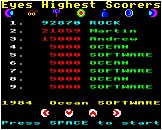 |
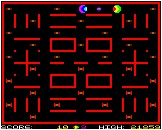 |
From the Martin Galway page on Wikipedia:
... Martin realized that "Eyes" (oddly enough another Pac-Man rip-off) by schoolfriend Paul Proctor could be worth "proper" money, and he picked up a copy of Personal Computer News to look for a publisher. By March 1984 that magazine's back cover was regularly staked out by Ocean Software in Manchester, so they were spotted first; Martin approached them as Paul's agent. The game was liked, and after a meeting with David Ward, Ocean paid three hundred quid for it (which was a pittance even back then and equal to six weeks at 50/week). Despite the title, "Eyes" was never seen again.
From Kevin Edwards (yes, the Kevin Edwards!):Just to let you know that I have un-earthed a new game for your Lost and Found section whilst trawling through my collection of old discs: Eyes for the BBC Micro.
It was written by Paul Proctor (who also wrote Alien8, Knight Lore, Cookie, Lunar Jetman, Nightshade and Sabre Wulf for Ultimate: Play The Game) with music from Martin Galway. It was based on an arcade game from the eary 80s.
I guess only a handful of people ever saw the game. Only one copy was possibly given out and that was to Ocean in about 1984 - not certain if they were allowed to keep it or whether it was just demoed to them. On Martin's Wikipedia page, it mentioned that a payment was made for it, but that was news to me. It certainly wasn't published, possibly due to copyright concerns as it was very similar to the Coin-op.
STATUS: FOUND [ download ]
|
FELIX AND THE WEEVILS by John Grove (ACORNSOFT) |
|
|
|
Released as Felix Meets the Evil Weevils by Micropower, but the existence of this version indicates that it had passed by Acornsoft's offices at some point. If they rejected it they must have been barmy 'cause it's ace!!
STATUS: FOUND [ download ]
|
FIRETRACK II by Orlando |
From Micro User, January 1989:
The original was revolutionary enough, featuring smooth vertical scrolling and some amazingly fast shooting action plus a routine to check for the presence of any sideways ram and store 12k of itself there.
Master 128 and Compact owners are used to seeing games that provide extended versions to take advantage of the extra memory of their machines.
But FireTrack was the first - and so far only arcade game to take advantage of the many near-standard memory expansion boards available for the Model B to produce a much larger game than could be fitted into an unexpanded machine. FireTrack II takes this practice of catering for machine expansions to previously unimagined limits. Some games allow only keyboard control; many allow the player to select a joystick option. FireTrack II also features routines to check for a mouse or trackerball and allow the ship to be controlled by either of these input devices.
One feature originally planned for FireTrack II has unfortunately now been shelved, but it is still worth a mention. Like its predecessor and Frak!, FireTrack II features some great music and at one stage of development, Orlando was hoping to include routines to drive a Music 500 or equivalent. Alas, the Music 500 uses so many interrupts - each requiring a certain amount of processor time - that the game would have been far too slow. Another option would have been to omit a number of other planned features but the game itself had to take precedence over the soundtrack.
I think it a great pity that this idea did not come off, because the music produced in this way and transmitted to a full size hi-fi would have been far superior to any music heard on an 8 bit machine. Gary Partis once told me that he designed Syncron as an exercise in pure speed - playability was not supposed to come into it! Perhaps, in the same spirit, someone can produce a simple game as a vehicle for a full soundtrack for the internal speaker - and also for the Music 500, if fitted.
One point that particularly concerns Orlando is that it is very difficult to give computer graphics any convincing impression of depth. I thought the rocky landscapes in the original FireTrack looked very realistic but you were always flying above it. Other games, like WAR and Syncron included tall buildings and structures into which your ship could crash if you did not avoid them - but you could only discover how tall they were by flying into them. FireTrack II will feature three-dimensional hazards designed by revolutionary new graphic techniques so that they stand out from the planet's surface clearly.
Although I first saw FireTrack II in the late summer of 1987, it has been continually put off to make way for Orlando's many other projects. It seemed to be at a fairly advanced stage even then, so I hope to see it soon. The final form in which it will be released is still not clear. It may be disc only, or cassette versions may require the machine's internal memory to be expanded. We'll have to wait and see ...
From Nick "Orlando" Pelling:
"FireTrack 2": Bof and I developed some preliminary levels for this (now all lost, I believe) but my intention was to make a viewed-from-above scrolly game but with a really 3d feel. At one stage, I tried prototyping a level using red/green 3d glasses - interesting, but didn't work well enough for me.
STATUS: LOST
|
FRAK (RUDE HACK) |
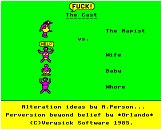 |
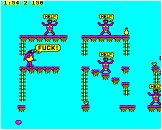 |
Vulgar, unofficial modification of Frak.
STATUS: FOUND [ download ]
|
FRAK II by Orlando |
From A & B Computing, May 1987:
What was really intriguing, though, was news of an unfinished Frak! 2 storyboard, scrolling routines and graphics completed. Described as the 'world's first computer musical', it promised Trogg's son in a 3D fixed perspective world, armed with skateboard and magic boomerang, together with frequent little dances!
From Nick "Orlando" Pelling:
"Frak! 2" was an isometric view (it looked a bit like Marble Madness) skateboard and boomerang game, starring TJ (Trogg Junior) trying to rescue his father from Scrubbly Island. Oh, and it was a musical. :-) Trogg also gave hints using sign language between stages. :-))
I did a load of work on F2, but it was basically not commercially viable - almost no-one would have got what it was all about (which is probably still true).
"Frak! 3" was an Archimedes demo: an animated Trogg (hand-drawn, viewed from behind) walking around inside a 3d world - basically, a 3d platform game. This was some 8 or 9 years too early. :-)
STATUS: LOST
|
FROGMAN (DEMO) by Rich Talbot-Watkins & Matt Godbolt |
From Rich Talbot-Watkins, July 2002:
A colourful, multi-screen puzzle game with some nice music and was considered by Superior I seem to remember..
From Rich Talbot-Watkins, April 2003:
This disc image contains an unfinished build of Frogman. I could find no sourcecode for it either, and it all appears to be encrypted ... what were we thinking back then?? I have to admit, Frogman is not really very good! I can't remember the solution to Level 1 (Level 2 was unfinished) so play around with it until you get bored (or the music drives you potty!). I remember spending a whole evening (on a 'school night') drawing that blimmin' frog on the title page pixel-by-pixel in a pixel editor I'd written, copied from a Biology textbook! Nightmare.
STATUS: FOUND [ download ]
|
FRUIT CATCHER (LIVEWIRE) |
|
|
|
Unreleased Fruit Machine simulation.
Spotted on an eBay auction together with Braz (qv). The seller acquired the tapes from the former managing director of LiveWire software, a Manchester-based company that folded in the 1980s.
STATUS: FOUND [ download BBC/Electron UEF tape image ]
|
GAUNTLET (US GOLD) |
From A & B Computing, August 1987:
An official version of Gauntlet for the BBC is on its way, but I'm sworn to secrecy about the company and programmer's identity.
STATUS: LOST
|
GHOULIES |
|
|
|
Identical to Micropower's Ghouls, except with a different title. Must have been an evaluation version or something.
STATUS: FOUND [ download ]
|
HIP HOP by Ian Webster (BUG-BYTE) |
From Ian Webster, November 2002:
A sideways scrolling run and jump style game which was to be published by Bug-Byte before they went under / were taken over.
STATUS: LOST
|
JELTRON or JELTON by Gil Jaysmith & Richard Broadhurst |
From Gil Jaysmith, February 2002:
A shoot-em-up written by Richard Broadhurst and me, with no fixed name and pretty much zero true content (we called it 'Jeltron' or 'Jelton'), which we demoed to Tynesoft in 1987. We didn't finish it because college intervened. Superior had passed on it because they wanted their games in WHSmiths who wouldn't stock BBC titles without a matching Electron version, and basically we couldn't be arsed doing a crap version of it... still, the BBC version was nice and smooth and stands as a reasonable technology demo if nothing else. I'll ask Ric if he still has his copy of it and maybe we can send it in...
STATUS: LOST
|
JEREMY GOES JUMPING by Paul Haigh (SUPERIOR) |
|
|
|
From Crispin Boylan's interview with Richard Hanson:
[Hanson] I think I have all of our published games, plus a few that didn't make it to publication. An unusual game called Jeremy Goes Jumping is probably the one that was closest to publication, but it didn't quite make the grade.
STATUS: FOUND [ download ]
|
JOUST by Stuart Cheshire a.k.a. Delos D Harriman (ATARI / AARDVARK / DELOS / GO-DAX) |
|
|
|
Due to be released by Atarisoft before they ceased their Acorn operation. Orlando's Aardvark Software was next in line as potential publishers, though a licensing deal with Atari could not be struck. Delos himself then began marketing, duplicating and distributing it himself (from his flat!), advertising in the back pages of computer magazines. Eventually Daryl Still's Go-Dax snapped it up and it was finally given a full, commercial release, though under a different guise ("Skirmish").
STATUS: FOUND [ download ]
|
KNIGHT ORC (LEVEL 9) |
Appeared on the price lists that were distributed with other Level 9 releases, but as far as a Beeb version goes, nobody's seen or heard a thing.
STATUS: LOST
|
KWANGTUNG by Juan Richardson (TOPTEN) |
From A & B Computing, October 1987:
All the way from New Zealand comes a fun little machine code game by Juan Richardson that resembles the heady days of Micro Power's endless platform releases - Kwangtung. No doubt it means something in the antipodes.
The game involves moving up and down ladder, avoiding monsters that look like animated gardening forks and jumping onto vegetables for points. Great fun!
The game was sent as a result of our offer back in April to try and help you place your masterpieces with our friends in the software business - Kwangtung has already been sent off with a suggestion that it might be suitable for a budget compilation currently being planned.
STATUS: LOST
|
LAZERCHESS by Andre Sihera |
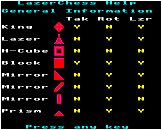 |
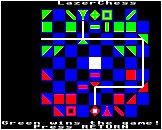 |
From Andre Sihera, January 2006:After 16 years sitting in a disk box, I found the game as I was rummaging through my old Electron programming disks over Christmas 2005. I never was much of an arcade programmer, even though I was heavily into real-time programming and writing highly optimised and performant code at the time. However, I liked my board games and I happened to find a previously unreleased game that I had completely forgotten about.
Laserchess was originally a submission in a programming competition and won $10,000 for its inventor, Mr. Mike Duppong, in 1987 when it was published in "Compute" magazine. I saw both the Atari ST and Apple II GS versions at school friends' houses in 1989 and knocked up this version in 1990. I intended to submit it to Superior Software for consideration and even wrote a letter to Mr. Hanson himself (dated 28 March 1990, using AcornSoft "View" of course) explaining my development. However, for some reason, I never sent it. I don't remember exactly why I gave up, but I do remember thinking at the time that 2-player board games were not as saleable as "player vs. computer" board games (e.g. AcornSoft Chess) and, because I hadn't written an AI engine for the player to go up against, I was probably thinking at the time it would not be a particularly sellable game.
The game was written in 100% assembly language, although it took two attempts to get to a working game. The first attempt failed due to lack of memory on compilation. It was developed using my own macro assembler and sprite editor on an Electron with &1D00 ADFS. However, as the source code compiled at &1D00 this left little space for the source itself. So, after re-writing my macro assembler to use multi-file assembly, I managed to remove the limit on the source-code size. From there, the second version of the game was completed in just 6 days.
I think some of the design decisions were quite interesting. For example, on an Electron you might notice that rotating a piece anti-clockwise is slower than rotating it clockwise. To save me writing an anti-clockwise Mode 2 rotation function I decided it was easier to rotate clockwise three times to achieve the same effect. Similarly, there is only one copy of each of the 8 basic pieces kept in memory at any one time; piece duplication, rotation, and colour-swapping all being done in real-time to reduce the game's memory footprint. Also, I decided to program a Monochrome video option that changed all the colours to maximise visibility on a green or amber monitor, a first I think even at that late stage in the BBC/Electron software scene. Amusingly, a very silly bug survived all these years where the menu screen always says "Press RETURN to start a new game", even when you're in the middle of a game and RETURN is used to return to the game, not abort it. Well, hopefully that was the only bug that got away!
Anyway, the game is release quality and is completely playable. Enjoy!
STATUS: FOUND [ download DFS Disc Image ] [ download ADFS Disc Image ]
N.B. The instructions are available:
- Here, in text format.
- Within each ZIP archive.
- On the disc images themselves (filename: inst) which can be *TYPEd (use CTRL-N then SHIFT to scroll).
On the ADFS version, they're stored in the docs directory (use *DIR DOCS to change directory).
|
LIGHTCYCLES by Peter Johnson |
From A & B Computing, August 1987:
Around Christmas 1982 I bought a BBC and in the six months before the end of my course I wrote BASIC versions of games like Missile Command and then, when I'd learnt machine code, a lightcycles game that sold about 12 copies through a local shop.
STATUS: LOST
|
MEGA APOCALYPSE (MARTECH) |
|
|
|
For a long time this was generally regarded as lost/unreleased, though there were reports of a leaked version in circulation. However, I've since seen several 'original' copies floating around and ended up acquiring both tape and disk releases in late 2001.
It is possible that these were only promotional releases handed to dealers etc - the 'incomplete' nature of the packaging certainly suggests this e.g. the covers are for the Amstrad CPC464 version (with BBC B labels crudely stuck on) and the instructions don't refer to the BBC controls (though an addendum slip was actually included).
STATUS: FOUND [ download ]
|
MIRROR OF KHORONZ by D L HASLAM |
|
|
|
Unreleased sequel to Gateway To Karos. Now PD.
STATUS: FOUND [ download ]
|
|
lost & found - page 1 | lost & found - page 2 | alternative titles | related links